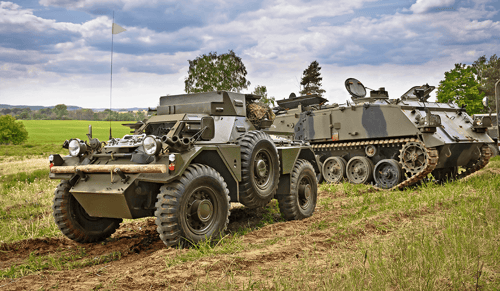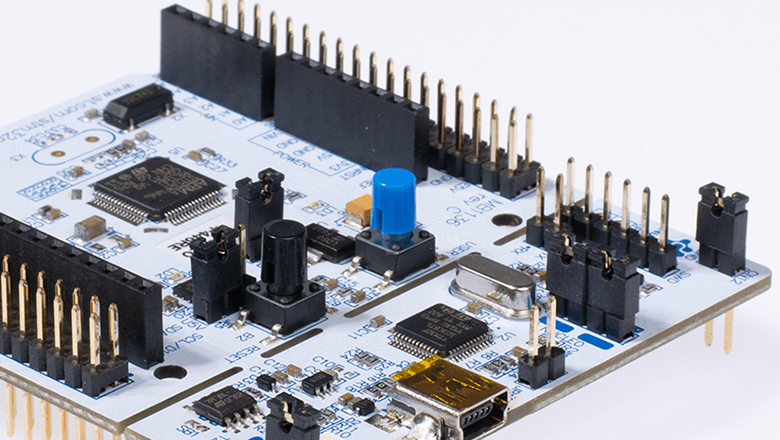Reliable distance measurements with a radar sensor
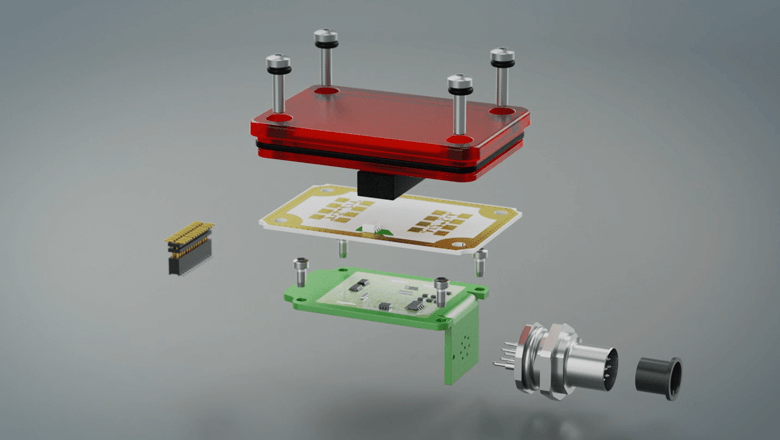
The radar sensor measures distances, movements, and velocity. The sensor calculates the distance to an object by measuring the reflection of a high-frequency signal from that object. The transmitted signal is reflected by buildings, liquids, and so on. This makes this distance sensor suitable for applications such as fluid level measurements, distances in traffic, and detecting objects.
In contrast to ultrasonic and laser distance sensors, radar can also measure through materials, such as plastic. This means that the radar sensor can be invisibly integrated into your application. Moreover, this robust technology is impervious to wind and moisture.
How do radar sensors work?
Radar works based on time of flight: the sensor measures how long a signal has been under way. The integrated antenna of the radar sensor emits a high-frequency signal (62 GHz), i.e. the transmitted signal. This signal also contains a lower-frequency modulated signal (10 MHz). The sensor receives the signal when it is reflected back from an object. The sensor measures the phase shift between the two frequencies. The time difference between transmitting and receiving determines the distance between the object and the sensor.
Frequencies provide opportunities
Every frequency has unique properties. The frequency determines the type of reflection and whether there is any reflection at all. A 5 GHz radar allows you to easily detect rain clouds at very large distances. This frequency is strongly reflected by water crystals. In contrast, a 60 GHz radar will pass through rain clouds and thus not recognize the clouds. But the signal will reflect off aircraft or other objects.
In contrast to radio station signals, radio signals from a radar sensor are reflected from buildings and liquids. This is because of the higher radar frequency. The higher the frequency, the less impenetrable walls (and other objects) become.
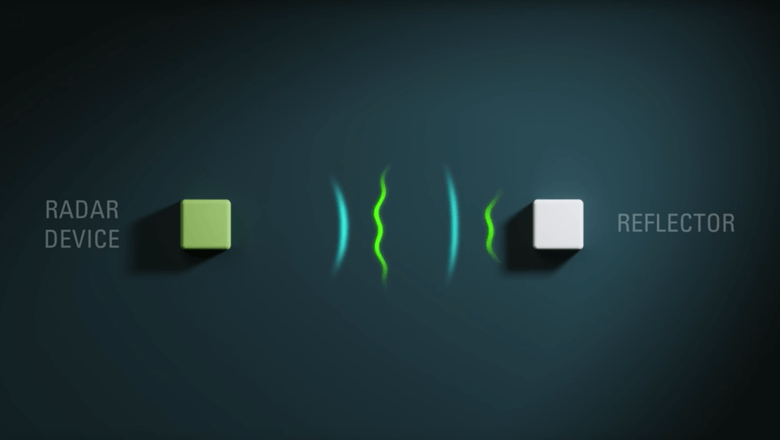
Radar is the abbreviation of RAdio Detection And Ranging. This means finding and measuring objects using radio signals.
The perfect alternative to ultrasound and laser
Besides radar, you can also measure distances with ultrasonic sensors and lasers. Every technology has its own pros and cons. For example, ultrasonic signals cannot pass through materials, such as plastic and plants. Laser signals are also blocked by such materials. Moreover, sound can be shifted by wind.
In contrast to sound and light signals, radar signals from a radio can make measurements through most materials. The signal is only impeded by metal objects. Thanks to these properties, radar is suitable for agricultural machinery and can measure distances to the ground without the measurement results being affected by crops.
Applications
You will find radar being used for indoor and outdoor applications. A radar sensor can be used to measure distances both horizontally and vertically. Radar can be used in a wide variety of applications because each frequency has different properties.
Fluid level measurement
If you use the right frequency, radar can measure the fluid level in a tank. The transmitted signal passes through the air, hits the fluid surface, and is then reflected back. The sensor provides a reliable measurement even in a harsh environment, such as with fumes and high temperatures.
Measuring distance in traffic
Radar is also used to measure distances in traffic, e.g. for adaptive cruise control in cars. The technology is reflected by metal at almost all frequencies, such that radar helps ensure that traffic situations are safe.
Agricultural machinery using distance measurements
You will also find radar used in the agricultural sector, such as in Agrifac irrigation systems. These machines use two distance radar sensors: the distance between the irrigation system and the ground and the distance between the irrigation system and the crop. The sensor also measures the plant density.
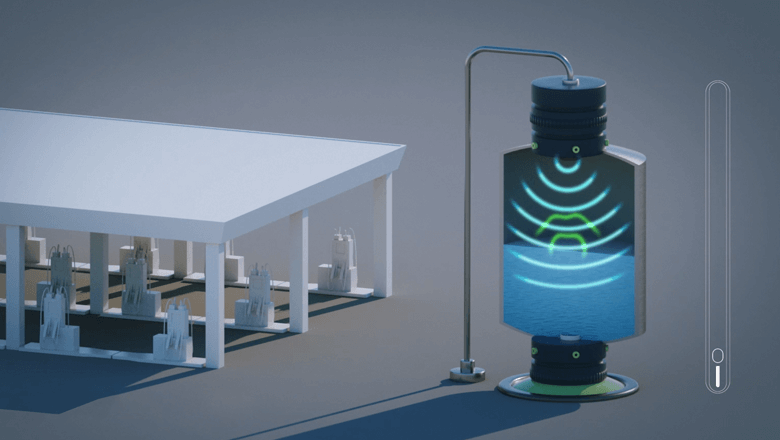
Five advantages of the radar sensor
The radar properties determine whether this sensor is suitable for your application. The five reasons to opt for this radar are as follows.
-
Can be invisibly integrated
Radio signals penetrate plastic, which makes it easy for the sensor to be installed behind a plastic cover. This way, this technology does not spoil the design of your application. -
Robust
The sensor is not visible because it is installed behind materials. This makes it robust and prevents vandalism. Moreover, this integration protects the sensor from environmental factors, such as moisture and dirt. -
Suitable for harsh environments
Compared to ultrasound and laser, the radar sensor is less sensitive to rain, snow, heat, dust, steam, and dirt. Moreover, the measurements are reliable because the transmitted signal is unaffected even with wind gusts. -
Many materials are measurable
Each frequency is reflected from and penetrates materials differently. You adjust the frequency when you do or do not want to measure a material. -
Safe technology
Sentech uses a single-chip radar. This is a radar built on an integrated circuit, i.e. a chip. Only a minimal amount of power is transmitted because of the smallness of the chip. This makes this technology very safe for people and animals.
Radar integration challenges
The radar’s measurement range is 180 degrees. Unreliable measurements may occur when the measurement range is too large for your application. Sometimes, you want to bundle the transmitted signal to measure right in front of the sensor. In such cases, you place a dome over the radar sensor. The transmitted signal is focused into one point like a directional antenna because of the differences in the time it takes the signal to penetrate the different plastics.
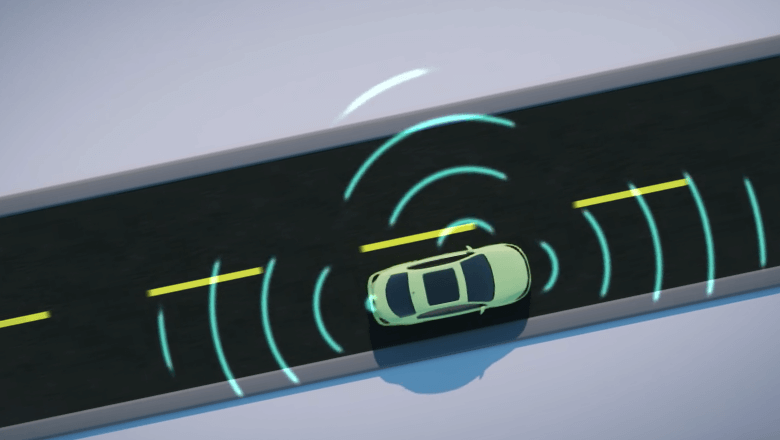
Measure even more with sensor fusion
Combining multiple sensor technologies in a single application. This is sensor fusion. This allows you to benefit from the advantages of both types of sensors. Moreover, you eliminate the disadvantages of each of the technologies.
For example, radar and lidar are combined so that vehicles can drive autonomously, e.g. AGVs. The two types of sensor are needed to ensure autonomous driving is safe.
How do you integrate radar into your application?
A radar sensor is an option when you need a distance sensor for your application. This robust technology can be integrated into your design so that it is invisible. Moreover, the measurement results are also reliable in conditions such as wind, rain, dust, and high temperatures.
Moreover, there’s a good chance that radar is a good match for your application when it comes to measuring fluid levels and distances or detecting objects.
Learn now about the opportunities provided by radar.



